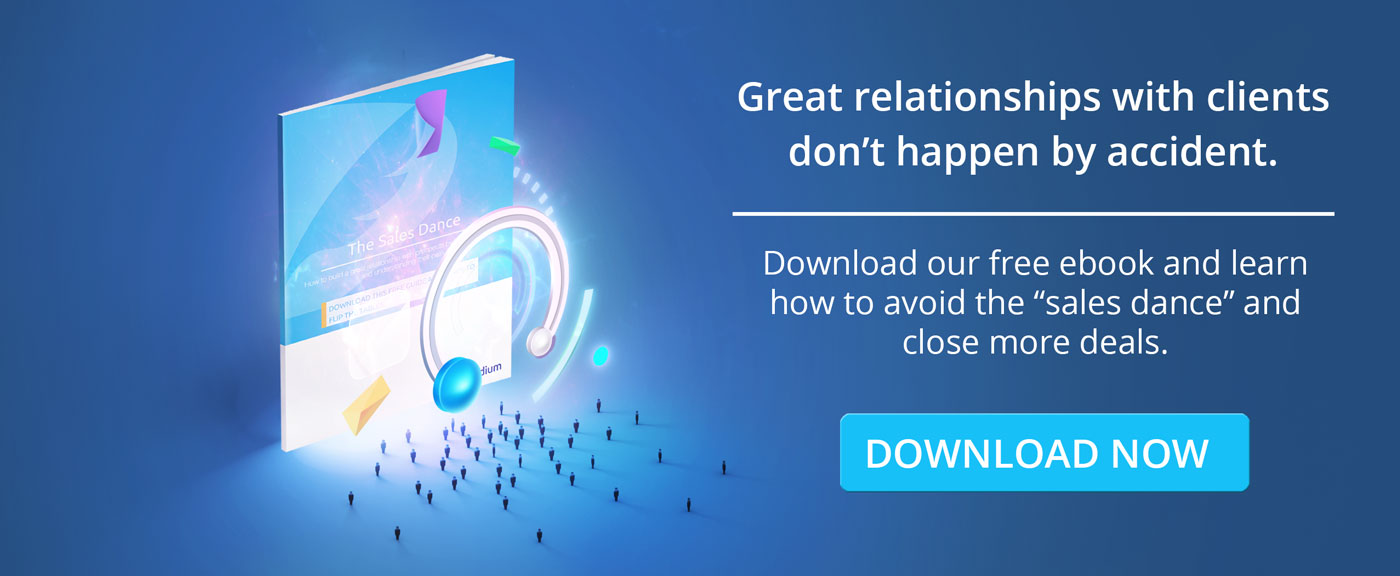In this article I want to shine light on the single biggest mistake that leads to low sales performance: Selling to the wrong customer profile.
Hitting revenue targets is the most important thing for any sales leader.
It is what keeps you up at night, what you think of during your morning routine, literally you bread and butter every second of the day.
But still, too many sales people make the same mistakes and wonder why they are not hitting revenue targets.
This has a multitude of reasons.
Anyone working in sales or in the management of a sales-reliant company should read this.
I want to show you how the sales team at Accordium constantly discusses our value add, defines ideals customer profiles, and relies on data to keep improving our sales performance.
It is important to understand why you are not hitting your goals.
Many startups and young companies believe that with time revenue will come.
But this is rarely the case. Especially startups should think about this issue early on.
If you are not putting enough thoughts into your revenue performance already early on, you are likely never going to hit it.
It’s not a “lets define it once and go with it” approach, but a constant reiteration, hit-and-miss style.
You will have to go back to the drawing board at least once a month or quarter and reconsider why your sales performance is the way it is – Even when you are more than happy! You should constantly ask yourself the questions that I will describe in this article and make sure you improve quarter after quarter.
Read also: Top 5 Low-Cost Hacks to Get Qualified Sales Leads
Why ICPs are one of the most important things in sales and your company in general.
An ICP, or Ideal Customer Profile, is a company or individual that you imagine to be the perfect buyer for your product.
It is highly important to get your ICPs right as they will determine your entire product development, marketing strategy, sales approach and in the end, your company’s performance.
It will define:
- Who you are selling to
- How you are selling to them
- How you are positioning the product
- How you are approaching them
- How you build your product, eg what features to prioritize
- Define the right marketing channels to acquire leads
Knowing who you are selling to, will allow you to bring your sales pitch to perfection and thus improve your CACs and conversion rates.
Bonus: By focusing on a small niche of ICPs you have the opportunity to build a Micro-Brand within a sector. This is especially important for startups without huge marketing budgets. (follow this blog for more infos on Micro Brands)
You will be able to standardize your sales pitch in a much better way; know beforehand what blockers you might face in your pitch and how to overcome them; know how long it will take you to close a customer – literally every step of the sales process.
How to define your ICPs
ICPs can be defined through different parameters. These vary between industries, business models and markets.
You should never rely on just one ICP, but have many in different industries and regions and you should test them against each other. This will not only hedge your risks, but also create multiple save revenue streams.
The goal is, to find the easiest way to get revenue – Who has the biggest need for your solution? Who is willing to pay the most money for it? Who can make the fastest decisions?
Nailing the answers to all of the above questions will impact your sales performance tremendously.
ICPs usually are defined through following parameters:
- Size in revenue ($)
- Size in employees (#)
- Location
- Industry
- Department (if any specific)
- Who is the buying persona: Influencer; a champion, or the final decision maker?
- What problem you are solving for them (see below)
Depending on your company, other parameters may be added such as:
- Total funding amount
- Company age
- Other
But most importantly, you need to define what the specific problem is you are solving for each ICP. For example in our case, an HR department will be looking to quicken the time to sign and onboard a new employee with Accordium, while a sales leader might be looking to increase his revenue by sending out more sales agreements through Accordium.
Download: eGuide on how to identify your ICPs by Evergrowth.io.
Is your solution a Painkiller, Vitamin or just a Nice-to-Have?
Furthermore, the problem can be broken down into 3 types:
- Painkillers: Your product is a direct solution for one of the biggest problems the decision maker is looking to solve. Here, your product will show a direct ROI and should make the sale easy (compared to the other categories).
- Vitamins help the influencer improve his KPIs, but it might not be top of mind for the true decision maker. A good example would be to sell Adobe Photoshop to a designer.
- Plug-In’s are nice-to-have’s, that are not on top of your decision maker’s list and don’t directly impact their KPIs. In this case, you want to keep customer acquisition costs very low.
Depending on what your solution means to the person you are selling to (influencers, champions or decision makers) you will have to adapt your approach and pitch.
In the case of a painkiller, you might want to use a top-down method where you approach the decision maker directly (e.g. the Head of Sales). With a plug-in you might want to rely on a self-serviced sell at low costs with minimum touch points selling directly to the end-user.
(Copyright Evergrowth.io 2018)
Test, Sell, Analyze, Repeat: Work in sprints to test who your ICP is.
There is no easy way to do it. It is hard work and it will take time – some companies need years before they know who their ICP is.
The only way to find them is by testing every possible combination of above parameters.
At Accordium, we work in 2-3 week sprints:
- We go back to the drawing board once a month
- Discuss our value over and over again
- Come up with ideas of who could see value in what we do
- Define 3-4 ICPs per sprint
- Test each ICP through different channels: Outbound emails/calls; paid ads; etc
- Measure performance: How many people responded positvely or negatively; how many meeting were booked; how many customers were closed
- Finally: Double down on the ICPs that showed best results & play around with some of its parameters (maybe that ICP works even better in a different country? Maybe the decision maker could be optimized?)
(Copyright Evergrowth.io 2018)
The idea is, that this is a never ending process. Once you think you have nailed an ICP, you should of course double down on it, but you should also try to define it even better.
At the same time, you should continue to test new and different ICPs that might work even better or help you hedge your revenue streams.
At Accordium we use a consultancy that helps us with high volume and data-driven outreach campaigns to methodically find our ICPs. Evergrowth has done an amazing job on the way, reaching out to thousands of potential customers and booking countless meetings. Weekly reports and dashboards help us understand who our customers are and why they are booking meeting with us.

Accordium Co-Founder Daniel Richardson with Evergrowth Co-Founder & Partner Jean-Baptiste Daguené
What is your experience with identifying your ICP? How do you do it?
Would love to read your comments!




